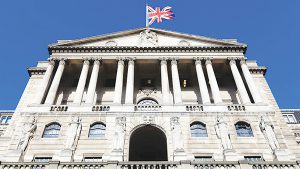With UK retail price inflation over 7%, there is clear justification for the Bank of England’s monetary policy committee to deliver a second consecutive interest rate hike to 0.50% at its upcoming meeting on February 3. Sadly for the average person, it is more likely to be felt in higher borrowing costs than actually securing anything much above zero for your savings.
The first baby raise of 15 basis points from the BOE in mid-December hardly registered among the high street banks — only a handful of financial institutions bothered to alter either their lending or savings rates. But a second hike coming so soon will be a different matter, especially with the BOE running down its holdings of government bonds. It is a less obvious way to tighten financial conditions but it will have a serious impact on the ease of access to credit and the cost of finance. In effect, it will be a double whammy.
Positive value indicates accommodative financial conditions, while a negative value indicates tighter financial conditions
relative to pre-crisis norms.
What really matters to the consumer is not really where the official BOE bank rate is but what premium, the lenders actually charge you, the individual borrower. That will depend on two factors: the prevailing risk appetite to increase loan books and how stiff the competition is to attract new borrowers. Average UK credit card rates — at over 21% — are already the highest this century: It’s the least attractive source of personal financing. Personal loan or car purchase rates are more competitive, ranging from 3% to 8% on average, but they will likely rise by more than the base rate increase, if history is any guide.
For most people, their biggest debt is secured by their home. With the average UK house price rising 10% last year, mortgage providers are now offering highly competitive rates. With three-quarters of outstanding mortgages on a fixed rate rising rates will not cause an immediate crunch to
living standards.
There are no piles of bad loans for the banks to contend with. In fact, several of the larger banks are keen to build their exposure to the UK residential property market. This has been most evident in the past year with much improved offers for first-time buyers, a segment which had been very inadequately served during the early part of the pandemic as banks avoided borrowers with either poor or short credit histories.
With UK savings rates still above the long term average of 8% — having been considerably higher during the pandemic — there is a surfeit of cash swilling about so banks do not feel they have to compete to secure it.
—Bloomberg
 The Gulf Time Newspaper One of the finest business newspapers in the UAE brought to you by our professional writers and editors.
The Gulf Time Newspaper One of the finest business newspapers in the UAE brought to you by our professional writers and editors.
